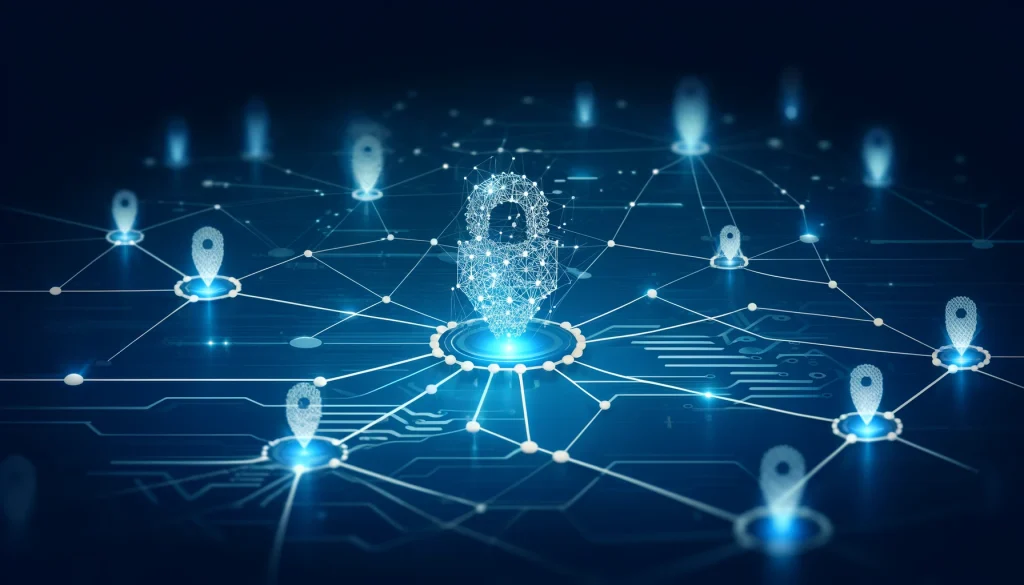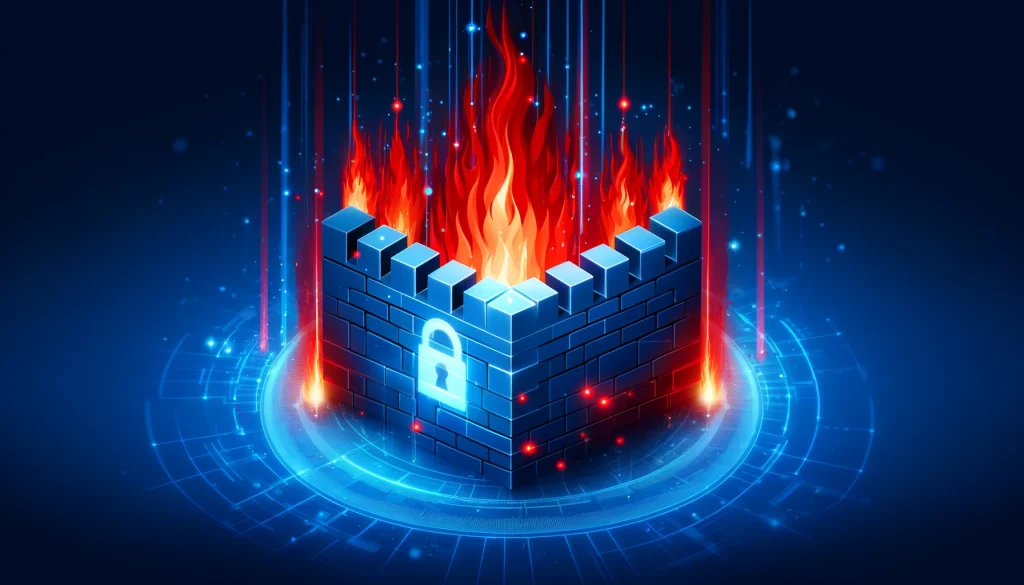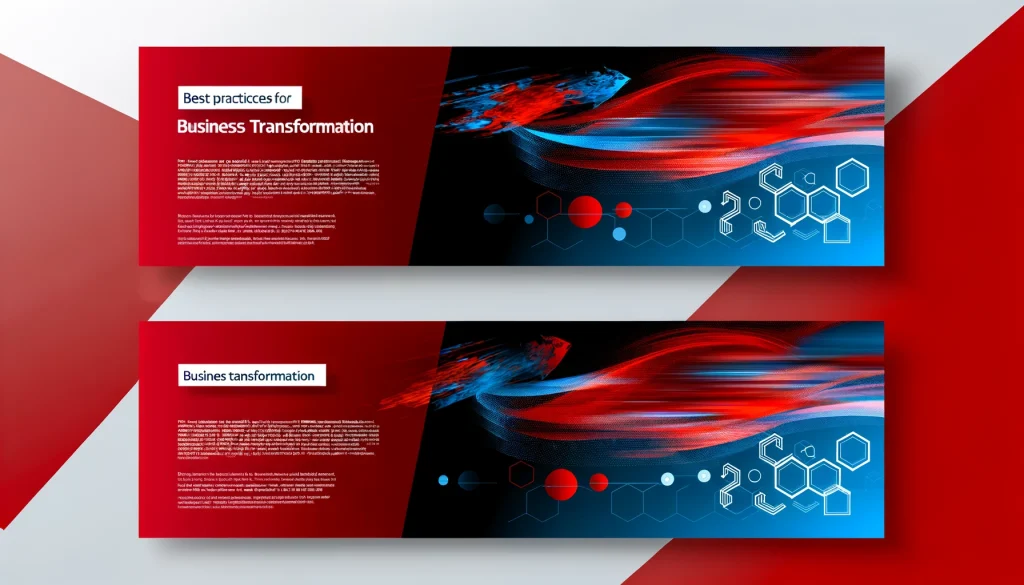Table of Contents
In today’s digital age, the significance of robust cyber security practices cannot be overstated. With cyber threats becoming more sophisticated and frequent, it is imperative for individuals and organizations alike to prioritize and implement critical security measures. This article outlines ten essential actions that are fundamental to protecting your digital assets and ensuring the integrity of your personal and professional data. From strengthening your authentication processes to regularly updating your software, each step serves as a strategic defense against the ever-evolving landscape of cyber risks.
10 Critical Cyber Security Actions You Should Take
Table of Contents
Application Security:
Application Security (AppSec) is a critical component of the software development life cycle, aimed at making applications more secure by finding, fixing, and preventing security vulnerabilities. With the increasing number of cyber threats, ensuring robust application security helps protect sensitive data, maintain user trust, and comply with regulatory requirements. Effective AppSec involves integrating security practices at every phase of development, from design to deployment and maintenance.

Key Points in Application Security
- Implement secure coding practices to prevent vulnerabilities such as SQL injection and cross-site scripting (XSS).
- Conduct regular vulnerability assessments and penetration testing to identify and address security weaknesses.
- Utilize Web Application Firewalls (WAF) to monitor and block malicious traffic and attacks.
- Employ encryption for data at rest and in transit to protect sensitive information.
- Keep software and dependencies up-to-date to mitigate risks from known vulnerabilities.
- Integrate security into the DevOps process, often referred to as DevSecOps, to ensure continuous security oversight.
- Use authentication and authorization measures like OAuth and multi-factor authentication to secure access controls.
- Perform security audits regularly to ensure compliance with industry regulations and standards.
- Educate developers and staff on security best practices and emerging threats.
- Leverage tools like Static Application Security Testing (SAST) and Dynamic Application Security Testing (DAST) for comprehensive security checks.
Network Security:
Network security involves policies, processes, and technologies designed to protect the integrity, confidentiality, and accessibility of computer networks and data. It encompasses measures to prevent unauthorized access, misuse, malfunction, modification, destruction, or improper disclosure, thus ensuring that the network performs its critical functions correctly and there are no harmful disruptions.
Key Points in Network Security
- Use of Firewalls: Firewalls act as barriers between trusted internal networks and untrusted external networks, such as the internet, controlling incoming and outgoing traffic based on security rules.
- Intrusion Detection Systems (IDS) and Intrusion Prevention Systems (IPS): These tools monitor network traffic to identify and respond to suspicious activity by logging information and attempting to block potential threats.
- Virtual Private Networks (VPN): VPNs secure a network by encrypting connections from an endpoint to a network, often over the internet, protecting sensitive data during transmission.
- Regular Software Updates: Keeping network software and devices updated is crucial to protect against known vulnerabilities and exploits.
- Secure Wi-Fi Networks: Implementing strong encryption settings, such as WPA2 or WPA3, for Wi-Fi networks to protect against unauthorized access and eavesdropping.
- Network Segmentation: Dividing the network into smaller parts to limit access to sensitive information and more effectively control and mitigate potential breaches.
- Anti-malware and Antivirus Protection: Deploying anti-malware and antivirus software to detect, quarantine, and eliminate malicious software from the network.
- Data Loss Prevention (DLP): Technologies that monitor and control endpoint activities, filtering data streams on corporate networks and protecting data in motion and at rest.
- User Education and Awareness: Training users on the importance of network security, potential threats, and safe practices, such as recognizing phishing attempts and avoiding suspicious downloads.
- Multi-factor Authentication (MFA): Enhancing security by requiring two or more verification methods to gain access to the network, reducing the likelihood of unauthorized access. How to choose the right MFA for your small business (okta.com)
Cloud Security:
Cloud security encompasses a collection of policies, controls, procedures, and technologies that work together to protect cloud-based systems, data, and infrastructure. This security is vital for both cloud service providers and customers to ensure that data stored online is protected against theft, leakage, and deletion. Here’s an overview and key points about cloud security:

Key Points in Cloud Security
- Data Encryption: Encrypt data at rest and in transit to protect sensitive information from unauthorized access and breaches.
- Access Management: Implement strong authentication and authorization practices to control access to cloud resources and services.
- Secure APIs: Ensure that APIs used to interact with cloud services are secure and do not expose sensitive data or allow unauthorized access.
- Compliance and Audits: Adhere to regulatory and compliance requirements for data security and privacy, such as GDPR, HIPAA, and PCI DSS.
- Threat Detection and Management: Utilize advanced threat detection technologies to monitor for and respond to security threats in real time.
- Security Configuration and Patch Management: Regularly update and patch cloud systems to protect against vulnerabilities.
- Multi-factor Authentication (MFA): Use MFA to enhance security by requiring multiple forms of verification to access cloud environments.
- Endpoint Security: Secure all endpoint devices that access the cloud, including mobile devices and laptops, to prevent breaches.
- Training and Awareness: Educate employees about cloud security best practices and potential threats like phishing attacks.
- Cloud Security Architecture: Design a robust cloud security architecture that includes segregation of duties, least privilege, and secure data storage and transmission mechanisms.
Properly implemented, cloud security ensures the safe usage of cloud services for various organizational needs while maintaining the integrity and privacy of information.
Data Protection and Privacy:
Data protection and privacy refer to the processes and legal frameworks designed to ensure the safe handling, storage, and use of personal information, protecting it from unauthorized access, misuse, or disclosure. As digital data becomes increasingly integral to business operations and personal activities, the importance of safeguarding this data cannot be overstated

Key Points in Data Protection and Privacy
- Consent Management: Secure explicit consent from individuals before collecting, using, or sharing their data.
- Data Minimization: Collect only the data that is necessary for the specified purpose and no more.
- Transparency: Provide clear and accessible information about how personal data is used, stored, and processed.
- Right to Access and Rectification: Allow individuals to access their personal data and make corrections if the data is inaccurate.
- Anonymization and Pseudonymization: Use techniques to de-identify data, ensuring that personal information cannot be linked back to the individual without additional information.
- Security Measures: Implement strong security practices such as encryption, secure data storage solutions, and regular security audits to protect data from breaches and leaks.
- Data Breach Notification: Have procedures in place to detect, report, and investigate personal data breaches and notify affected individuals and regulatory bodies in a timely manner.
- Privacy by Design: Incorporate data protection from the onset of the designing of systems, rather than as an addition.
- Cross-Border Data Transfers: Ensure that data transferred across borders is adequately protected according to the legal requirements of the originating and receiving countries.
- Employee Training: Regularly train employees on privacy policies, data protection practices, and the importance of protecting customer data.
Effective data protection and privacy measures not only comply with regulatory requirements, such as the GDPR in Europe, CCPA in California, and other global privacy laws, but they also build trust with customers by demonstrating commitment to safeguarding their personal information.
Endpoint Security:
Endpoint security refers to the methodologies and technologies used to protect devices connected to a corporate network, such as desktops, laptops, smartphones, and tablets, from cyber threats. As endpoints often serve as entry points for security breaches, robust endpoint security is critical for preventing potential attacks that can compromise the entire network

Key Points in Endpoint Security
- Antivirus and Anti-malware Software: Continuously updated software to detect, quarantine, and remove malicious software.
- Firewalls and Intrusion Prevention Systems (IPS): Tools that monitor incoming and outgoing network traffic to block malicious activities and known vulnerabilities.
- Patch and Configuration Management: Regular updates to software and systems to fix vulnerabilities and ensure that security settings are configured correctly.
- Encryption: Protecting data stored on endpoints by converting it into a secure format that is unreadable without the correct decryption key.
- Endpoint Detection and Response (EDR): Advanced tools that continuously monitor endpoints for suspicious activities and provide automated response capabilities to eliminate threats.
- Zero Trust Security Model: A security strategy where no entity is trusted by default from inside or outside the network, and verification is required from everyone trying to gain access to resources on the network.
- Mobile Device Management (MDM): Tools that allow for the management and security of mobile devices, including remote wiping and device tracking to protect corporate data. Mobile Device Management in Microsoft 365 – ManageEngine
- VPN and Secure Access: Ensuring that endpoints accessing the network remotely do so via secure, encrypted connections to prevent interception of data.
- Phishing Protection: Tools and training to help users recognize and avoid falling victim to phishing attacks, which are common vectors for introducing malware into a network.
- Regular Security Audits and Behavioral Analytics: Monitoring and analyzing how devices are used and how data flows through them to identify potential security threats based on unusual activities.
Effective endpoint security requires a layered approach that combines multiple defensive strategies to mitigate risks and protect network assets from increasingly sophisticated threats. This holistic approach ensures that all endpoints, whether they are on-premises or remote, are secured against potential security breaches.
Identity and Access Management (IAM):
Identity and Access Management (IAM) is a framework of business processes, policies, and technologies that facilitates the management of electronic or digital identities. By controlling user access within an organization through the automation of essential tasks and integration of various policy-based technologies, IAM ensures that the right individuals access the right resources at the right times for the right reasons.

Key Points in Identity and Access Management
- Centralized Directory Services: Use of directory services like Active Directory (AD) or LDAP to manage user information and enforce policy across the organization.
- Authentication Mechanisms: Implementing strong authentication methods such as passwords, biometrics, security tokens, and multi-factor authentication (MFA) to verify user identities.
- Authorization and Role Management: Defining and enforcing what resources users can access based on their roles within the organization.
- Single Sign-On (SSO): Allows users to authenticate once and gain access to multiple systems without needing to log in again, enhancing both security and user experience.
- Privileged Access Management (PAM): Controls and monitors administrative and privileged accounts to ensure heightened security where it’s most needed.
- User Provisioning and Deprovisioning: Automated processes for creating, managing, and deleting user accounts and access as necessary, particularly important when employees join or leave a company.
- Audit and Compliance Reporting: Tools to monitor and record access and activities, providing reports for auditing and compliance with regulations such as HIPAA, GDPR, and SOX.
- Identity Federation: A system where multiple enterprises can share identity information so that users can seamlessly access systems across organizational boundaries without multiple credentials.
- Advanced Analytics and User Behavior: Utilizing AI and machine learning to detect abnormal behavior and potential security breaches based on user activity patterns.
- Cloud Access Security Brokers (CASB): Security policy enforcement points that sit between cloud service consumers and providers to ensure that enterprise security policies are adhered to across all cloud-based resources.
Effective IAM systems enhance organizational efficiency and security by ensuring that appropriate levels of access are maintained, monitored, and regulated throughout the user lifecycle. This plays a critical role in protecting an organization’s information assets against unauthorized access and other cyber threats.
Threat Intelligence and Response:
Threat Intelligence and Response refers to the methodologies and systems used to detect, analyze, and respond to cyber threats in a timely and effective manner. This field encompasses the collection, evaluation, and application of information about existing and emerging threats to protect an organization’s information assets.
Key Points in Threat Intelligence and Response
- Real-time Threat Monitoring: Continuous monitoring of networks and systems for suspicious activity that may indicate a threat.
- Cyber Threat Intelligence (CTI): Gathering and analyzing information about current and potential attacks that threaten the safety and security of an organization.
- Incident Response Planning: Developing a structured approach to handle and mitigate cyber incidents with minimal impact on business operations.
- Security Information and Event Management (SIEM): Integrating SIEM tools to aggregate, analyze, and respond to security alerts generated by network hardware and applications.
- Threat Hunting: Proactively searching through networks to detect and isolate advanced threats that evade existing security solutions.
- Automated Security Orchestration: Using automation to streamline response processes, reducing the time from threat detection to resolution.
- Vulnerability Management: Regular scanning of systems for vulnerabilities; prioritizing and remedying those that could be exploited by attackers.
- Intelligence Sharing: Participating in and contributing to threat intelligence communities to share information about threats and countermeasures.
- Behavioral Analytics: Using user and entity behavior analytics (UEBA) to identify abnormal behavior that might indicate a threat.
- Forensic Analysis: Conducting digital forensics to investigate and understand the nature of attacks after they occur, which helps in preventing future incidents.
- Threat Actor Profiling: Understanding and profiling the behavior of threat actors to predict future attacks and devise strategies to counteract them.
Effective Threat Intelligence and Response capabilities are crucial for organizations to not only defend against but also anticipate and neutralize potential security threats before they can cause significant harm. This strategic approach enhances an organization’s security posture by enabling it to be more resilient against cyber threats.
Email Security:
Email security is the practice of protecting email communications from unauthorized access, loss, or compromise. This is a critical aspect of information security as email is a common vector for phishing attacks, malware distribution, spam, and information leakage

Key Points in Email Security
- Spam Filters: Utilizing advanced spam filtering solutions to prevent unsolicited and potentially harmful emails from reaching user inboxes.
- Anti-malware and Anti-virus Protection: Scanning incoming and outgoing emails for malicious attachments or links that could infect systems with malware or ransomware.
- Phishing Protection: Implementing technologies and policies to identify and block phishing attempts, which often involve fraudulent emails posing as reputable sources to steal sensitive data.
- Email Encryption: Encrypting email messages and attachments to protect sensitive information during transmission from being intercepted by unauthorized entities.
- Data Loss Prevention (DLP): Deploying DLP systems to monitor, detect, and block the transmission of sensitive information outside the corporate network.
- Secure Email Gateways: Using secure email gateways to enforce security policies at the email entry and exit points of an organization.
- User Authentication and Access Controls: Ensuring that email accounts are protected with strong authentication methods, such as multi-factor authentication (MFA), to prevent unauthorized access.
- Security Awareness Training: Regularly training employees on the best practices for email security, including recognizing and reporting suspicious emails.
- Email Archiving and Backup: Implementing solutions for secure email archiving and regular backups to protect email data and ensure it can be recovered in the event of data loss or a cyber incident.
- Endpoint Security: Securing all endpoint devices that access email, such as smartphones and laptops, to prevent breaches that could compromise email security.
Maintaining robust email security protocols is essential for minimizing the risk of cyber threats, ensuring compliance with regulatory requirements, and protecting organizational reputations and operations.
Staff Access to Technical Resources:
Staff access to technical resources involves managing and monitoring the allocation and usage of technology-related assets within an organization. This includes everything from software and hardware to network resources and proprietary data. Effective management ensures that employees have the appropriate access required to perform their jobs efficiently while maintaining security and compliance with relevant policies.
Key Points in Staff Access to Technical Resources
- Role-Based Access Control (RBAC): Implementing RBAC to ensure that employees have access only to the resources that are necessary for their roles.
- Authentication and Authorization: Utilizing strong authentication methods, such as passwords, biometrics, and multi-factor authentication (MFA), to verify the identity of users accessing resources.
- Regular Audits and Reviews: Conducting regular audits of access rights to detect and correct permissions that are excessive or no longer needed.
- Least Privilege Principle: Adhering to the principle of least privilege by granting users the minimum levels of access necessary for their work tasks.
- Secure Onboarding and Offboarding: Ensuring that access to technical resources is securely managed when employees join or leave the organization, including the prompt deactivation of accounts for former employees.
- Training and Awareness: Educating staff on the importance of security practices related to accessing and using technical resources.
- Monitoring and Logging: Keeping detailed logs of access and usage of technical resources to detect and respond to potential security incidents promptly.
- Use of Access Management Tools: Deploying technology solutions that streamline the management of user permissions, making it easier to enforce policies consistently.
- Compliance with Regulations: Ensuring that access control policies and practices comply with relevant legal and regulatory requirements, such as GDPR, HIPAA, or SOX.
- Encryption and Secure Data Storage: Protecting sensitive information accessible through technical resources using encryption and other data protection methods.
By carefully managing staff access to technical resources, organizations can protect sensitive information and systems from unauthorized access and potential cyber threats while ensuring that staff have the tools they need to succeed in their roles
Security Training and Awareness:
Security Training and Awareness programs are essential components of an organization’s overall security strategy. These programs are designed to educate employees about the importance of security, the specific security policies and procedures of the organization, and the roles employees play in maintaining a secure environment. The goal is to equip staff with the knowledge and skills necessary to prevent, recognize, and respond to security threats effectively.

Key Points in Security Training and Awareness
- Regular Training Sessions: Conducting regular training sessions on various security topics such as phishing, password management, and safe internet practices to keep security top of mind.
- Simulated Attacks: Utilizing simulated phishing and social engineering attacks to test employee awareness and reinforce the training material.
- Interactive Content: Implementing interactive e-learning courses, workshops, and webinars that engage employees and improve retention of security principles.
- Policy Education: Ensuring all employees understand the organization’s security policies, procedures, and the reasons behind them.
- Role-Specific Training: Providing tailored security training that addresses the specific needs and risks associated with different roles within the organization.
- Updates on Latest Threats: Keeping staff informed about the latest security threats and trends to help them stay vigilant.
- Security Champions: Establishing a network of security champions across departments to advocate for security best practices and act as a point of contact for their team members.
- Feedback Mechanisms: Creating clear channels for employees to report suspicious activity or security breaches and to provide feedback on the training programs.
- Incident Response Training: Teaching employees their roles in the incident response plan, ensuring they know what to do and whom to contact in the event of a security breach.
- Metrics and Evaluation: Measuring the effectiveness of training programs through assessments and tracking improvements in employee behavior related to security.
By investing in comprehensive security training and awareness, organizations can significantly reduce the risk of security breaches and improve their overall security posture. These programs are vital for fostering a culture of security mindfulness that extends beyond the IT department to every employee. 50 Most Important KPIs for your Business – Exceediance If you are an emerging business you must do the Business Transformation and Digital Transformation. Check out this A Beginner’s Guide to Digital Transformation for Successful Entrepreneurs – 7 Sections – Exceediance


2 comments
[…] Fostering a Security Culture: Providing regular guidance on IT fraud management helps to foster a culture of security within the organization. This culture ensures that all employees, regardless of their role, understand the importance of security and their part in maintaining it. 10 Critical Cyber Security Actions You Should Take – Exceediance […]
[…] people. Unlike a centralized ledger, there is no single point of control or failure, enhancing security and […]
Comments are closed.